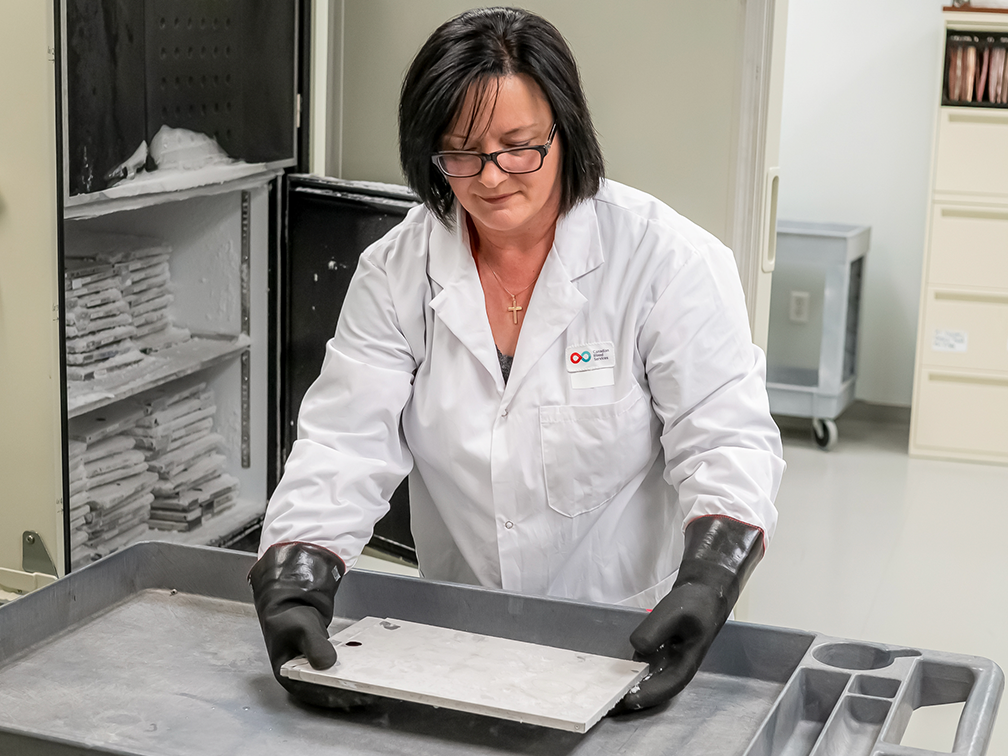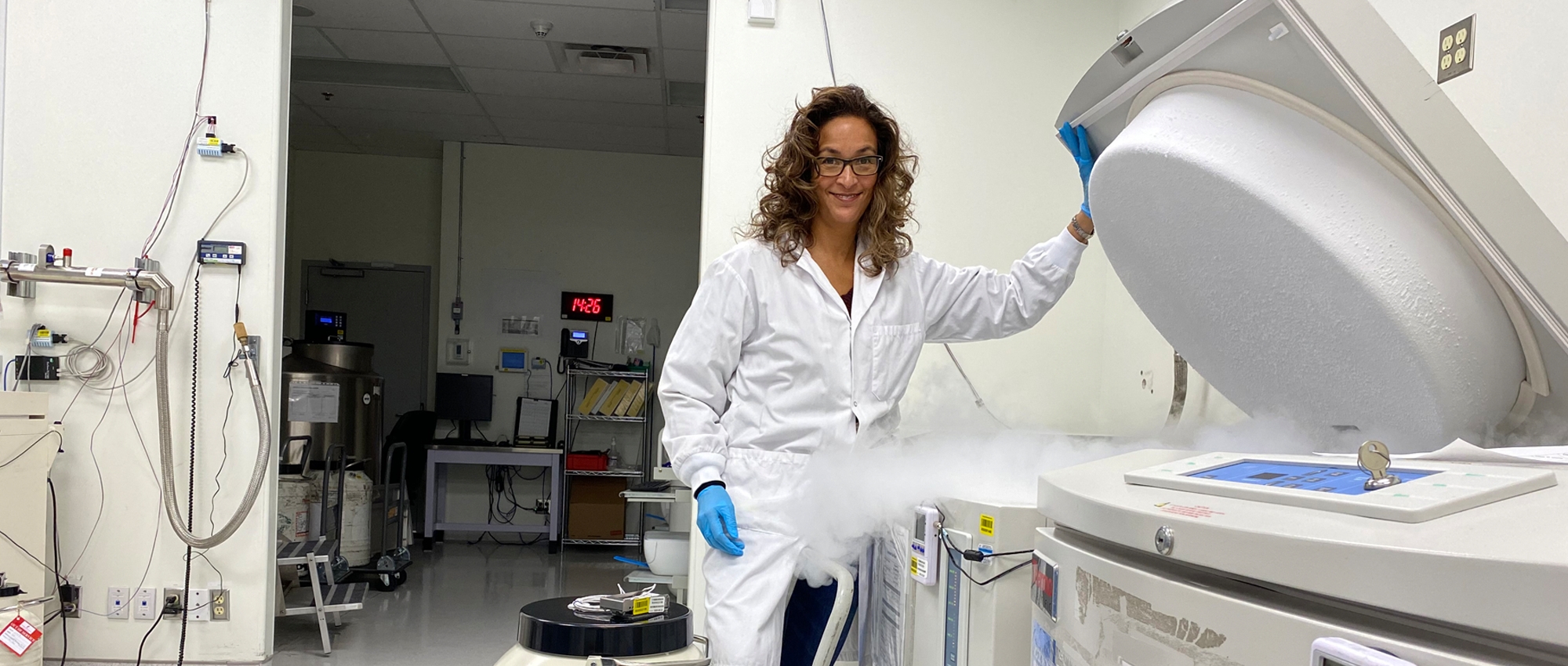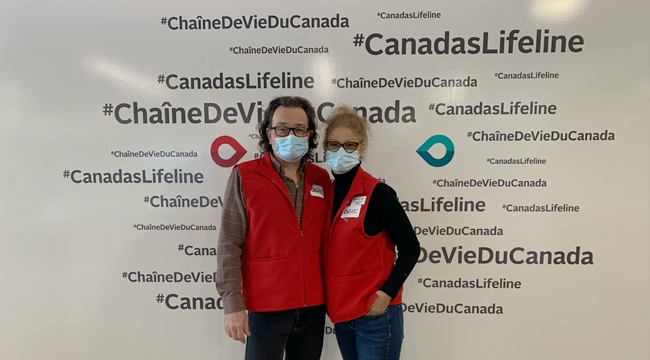The lifesaving science of keeping delicate cells on ice
Learn what cryopreservation is, and how it allows us to store rare blood types and stem cells until patients need them
Cryopreservation might sound like a very technical concept, but it’s actually something we encounter in our everyday lives. Your leftover chili lasts much longer in the fridge than on the counter. And if you put it in the freezer, you can reheat it for another dinner weeks or months from now. It’s a simple illustration of how the length of time we can store organic matter is directly related to the temperature at which it's stored.
The same basic principles apply to blood and stem cells that are used to treat patients. Units of red blood cells can last 42 days in the fridge. When frozen, they can last 30 years, and possibly even longer.
"Being able to store products is essential to what we do nationally. The fact we can store blood products outside of the body is the only reason we have a transfusion service," says Dr. Jason Acker, a senior scientist at Canadian Blood Services' Centre for Innovation and a Fellow of the International Society for Cryobiology.
"Historically, donors and recipients were side by side, and transfusions were arm-to-arm. Now we can separate donors and recipients in time and space, and this is enabled by preservation technologies."
But unlike last night’s chili, preserving delicate blood and stem cells requires more effort than tossing them in a freezer. Special processing is required to make sure they remain safe and helpful for patients.
Red blood cells and stem cells can both be cryopreserved, but need to be treated in different ways. Freezing red blood cells is essential for our rare blood program, which stores blood from donors with rare blood types to help patients who need it later. Stem cells always need to be cryopreserved when they're banked as cord blood, and stem cells from adult donors are often frozen after collection as well.
The process of cryopreservation
The first step to cryopreservation is preparing the cells. For this, we rely on cryoprotectants ― substances added to the red blood cells or stem cells to protect them from harm.
"The biggest challenge for cryopreservation is managing water within the cells. If you freeze the cells without cryoprotectants, the water inside the cells will turn into ice. When water turns to ice, its volume is increased, and when this happens in cells, then the cells will break apart and die," says Dr. Nicolas Pineault, a development scientist at Canadian Blood Services' Centre for Innovation whose expertise is in stem cell engineering.
"Cryoprotectants' job is primarily to manage the water by replacing water molecules inside the cells to prevent formation of ice and avoid cell death."
Red blood cells and stem cells use different cryoprotectants. Red cells use a glycerol solution, and stem cells use dimethyl sulfoxide (DMSO). The cryoprotectants are usually removed from the cells when they're thawed.

Canadian Blood Services stores red blood cells of rare types in special freezers, sometimes for decades. (This photo was taken before the COVID-19 pandemic.)
The next step is cooling the cells to the right temperature: -65°C for red cells, and -196°C for stem cells. The cells need to be cooled at specific rates, not too fast or too slow. When it's time to thaw them, they likewise need to be thawed in the right way at the right rate, and the cryoprotectant needs to be removed by washing and spinning the cells, or in the case of stem cells diluted.
Future possibilities in cryobiology
Many of the technologies we use for cryopreservation have been around since the 1960s and optimized over time. Some new areas of development show promise for improvements to the way we store blood and stem cells, as well as for new cellular therapies.
The University of Alberta, where Dr. Acker is a professor and has a lab, is home to one of the world's only graduate programs in cryopreservation. Most of Dr. Acker's graduate students proceed to work in cellular therapy programs. New developments in cryopreservation have huge implications for cell therapy, including CAR T-cell therapy, an exciting and quickly evolving new way to treat blood cancers.
New and improved ways to cryopreserve are supporting tissue and organ preservation, reproductive medicine and even the conservation of biodiversity in nature. For example, Dr. Acker was part of an expert group advising organizations that included those behind the Svalbard Global Seed Vault in Norway. "They're looking to preserve the food supply, and many things can't be preserved as seeds. That's another place cryopreservation can help," says Dr. Acker.
A big focus area is developing better cryoprotectants. Human cells aren't designed to survive freezing, but those of some animals are. Understanding the mechanisms that natural systems use could aid the development of new methods for preserving human cells.
Both Dr. Acker and Dr. Pineault are collaborating with Dr. Robert N. Ben, a biochemist at the University of Ottawa, to develop a new type of cryoprotectant inspired by several species of fish off the coast of Newfoundland that can survive below freezing temperatures. These fish naturally produce antifreeze proteins, which bind to ice and prevent it from crystallizing. Dr. Ben's team was able to synthesize sugar molecules that mimic the proteins found in these fish. Drs. Acker and Pineault are both working with Dr. Ben to develop this discovery's potential as a cryoprotectant.
"There have been a lot of advances since the 1960s that aren’t being incorporated into practice. Part of our role is to ensure that happens. We work with blood operators and organizations all over the world to help them understand how to better cryopreserve cells, tissues and organs," says Dr. Acker.
Canadian Blood Services drives world-class innovation in transfusion and transplantation research through our Centre for Innovation. Click here to learn more about how you can help us meet the needs of tomorrow by helping our team of researchers and partners engage in innovative research that will have an impact for generations to come.



